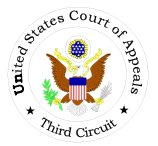An employee is a “supervisor” for purposes of vicarious liability under Title VII only if he or she is empowered by the employer to take tangible employment actions against the victim.
 |
| Not official use. |
This is an important determination, because it is easier to establish liability for sexual harassment where the harassment is from a "supervisor."
In Moody v. Atlantic City Bd. of Ed., the Third Circuit faced an interesting situation that required a tough call under the Vance standard. A substitute school custodian alleged that she was sexually harassed by a foremen at one of the schools. The foreman at each school was "delegated the authority to select which substitute custodians worked at the school." She claimed that one of the foremen, from whom she got most of her call-ins, stopped calling her in when she refused his sexual advances.
This case is tough, because at a high level he was not really her supervisor . . . he was just one of many people who could call her in for piecemeal assignments. However, cutting off these assignments would reduce her total work hours and ultimately her total compensation. That was enough for the majority to conclude that the school foreman was her supervisor.
Judge Rendell dissented, noting:
Could Marshall (the foreman) hire or fire Moody? Could Marshall promote or demote Moody? Could Marshall reassign Moody with significantly different responsibilities or make a decision that caused a significant change in her benefits? The record undoubtedly answers all of these questions in the negative.This case demonstrates that even "bright line rules" involve lines that are not always as brightly defined as they appear to be.

No comments:
Post a Comment